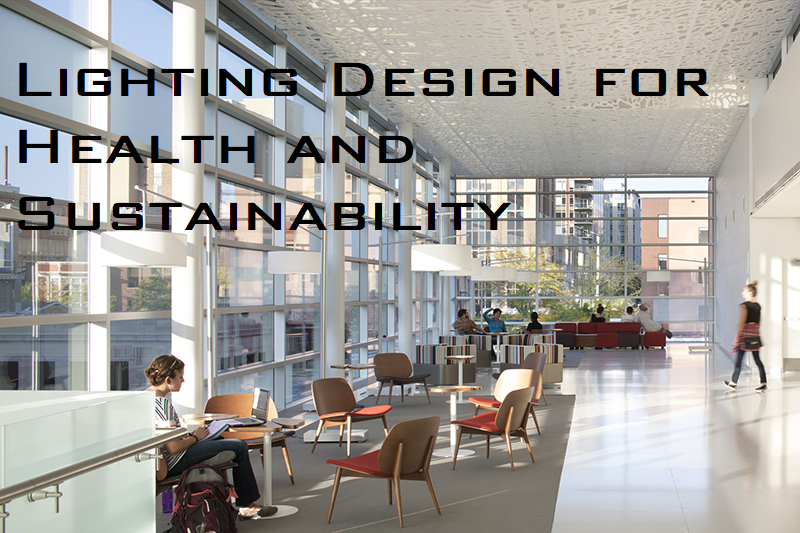Lighting Design for Health and Sustainability is no longer just an architectural buzzword—it’s a critical consideration for creating healthy and eco-conscious living and working spaces. In 2025 and beyond, architects, homeowners, and interior designers alike are focusing on how thoughtful lighting choices can transform both our physical health and the health of the planet. Whether you’re designing a new office, revamping your home, or planning a commercial project, Lighting Design for Health and Sustainability should be at the core of your strategy.
Why? Because the lighting you choose affects more than just visibility. Poor lighting can disrupt your sleep, strain your eyes, reduce your mood, and increase your energy bills. Meanwhile, strategic Lighting Design for Health and Sustainability supports natural circadian rhythms, boosts productivity, and significantly reduces carbon emissions. From daylight integration to energy-efficient LED systems, smart automation, and sustainable materials, this design philosophy blends beauty, wellness, and environmental responsibility into a single powerful solution.
This article explores the key elements of Lighting Design for Health and Sustainability, why it matters, and how it’s shaping the future of architecture and lifestyle. Let’s dive into the bright benefits of designing with purpose and care—for your body, your budget, and the planet.
What Is Lighting Design for Health and Sustainability?
Lighting Design for Health and Sustainability focuses on using lighting systems that promote human well-being while minimizing environmental harm. This includes maximizing natural daylight, using energy-efficient light sources like LEDs, incorporating smart lighting systems, and selecting light colors and intensities that align with our natural circadian rhythms.
It’s an interdisciplinary field that combines principles from architecture, environmental science, human psychology, and engineering to create spaces that are both comfortable and energy-efficient.
1. Circadian Lighting and Its Health Benefits
The human body follows a natural 24-hour cycle known as the circadian rhythm. Disruptions to this cycle—often caused by poor indoor lighting—can result in sleep disorders, fatigue, and even depression. Proper Lighting Design for Health and Sustainability integrates circadian lighting strategies by mimicking natural daylight patterns. Warm light is used in the evening to promote relaxation, while cooler, brighter light is used in the morning to boost alertness and energy.
By aligning indoor lighting with natural patterns, individuals experience improved sleep quality, better focus, and overall enhanced mental health.
2. Energy Efficiency and Environmental Impact
One of the most significant aspects of Lighting Design for Health and Sustainability is its commitment to energy conservation. LED technology has revolutionized lighting with its long life span and low energy usage. When combined with motion sensors, dimmers, and smart controls, these lighting systems drastically reduce electricity consumption and greenhouse gas emissions.
Incorporating daylight harvesting systems—where artificial lighting adjusts based on available sunlight—is another powerful strategy. This not only conserves energy but also provides more natural light indoors, benefiting both health and the planet.
3. Biophilic Design and Human Connection to Nature
Lighting Design for Health and Sustainability is often part of a broader biophilic design movement that seeks to reconnect humans with nature. Integrating natural light into building design is a cornerstone of this philosophy. Studies show that environments rich in natural light enhance mood, reduce stress, and improve productivity.
Large windows, skylights, and open spaces that allow light to flow freely all contribute to a biophilic atmosphere, blending indoor and outdoor experiences. With the right design, lighting can simulate the calming effects of nature even in urban settings.
4. Smart Lighting Systems and Personalization
Modern Lighting Design for Health and Sustainability includes smart systems that allow users to personalize their lighting environments. Using mobile apps or voice commands, users can change the brightness, color temperature, and even set schedules that align with their routines. This is especially useful in work-from-home setups where lighting needs vary throughout the day.
Smart lighting also offers integration with other smart home devices, providing greater energy savings and enhancing the overall living experience.
5. Sustainable Materials and Fixture Design
Sustainability isn’t just about energy—it’s also about materials. Sustainable lighting design incorporates eco-friendly materials in fixtures, such as recycled metals, glass, and bamboo. These choices reduce the carbon footprint of the design and add aesthetic value to spaces.
Lighting fixtures designed with sustainability in mind often have modular components, allowing for easy upgrades or repairs rather than full replacements, thereby reducing waste.
6. Long-Term Cost Savings
While the upfront costs of implementing Lighting Design for Health and Sustainability might be higher, the long-term financial benefits are clear. Energy-efficient lighting systems significantly lower utility bills, and the extended lifespan of sustainable lighting components reduces maintenance costs. Businesses and homeowners alike can enjoy considerable savings over time while contributing to environmental preservation.
7. Applications Across Industries
From hospitals and schools to office buildings and homes, Lighting Design for Health and Sustainability is being adopted across various industries. Hospitals use circadian lighting to improve patient recovery times. Schools integrate dynamic lighting systems to improve student focus. Offices use adjustable lighting to enhance employee well-being and productivity.
This universal applicability makes it a valuable tool for any sector aiming to improve human health and reduce environmental impact.
Conclusion: The Future Is Bright with Lighting Design for Health and Sustainability
In today’s world, where both human wellness and environmental responsibility are top priorities, Lighting Design for Health and Sustainability is no longer a luxury—it’s a necessity. From enhancing mood and productivity to reducing energy consumption and supporting sustainable development goals, well-designed lighting impacts nearly every aspect of our lives.
As we’ve explored, the right lighting plan doesn’t just illuminate a space—it promotes better sleep, healthier circadian rhythms, and improved mental well-being. On the sustainability front, using LED lighting, smart systems, and natural daylight integration helps lower your carbon footprint and energy costs. Together, these benefits make Lighting Design for Health and Sustainability a win-win solution for homes, offices, public buildings, and cities.
Adopting this approach isn’t just about following trends—it’s about embracing smarter, more conscious design decisions that support both human and planetary health. Whether you’re a homeowner, business owner, or architect, prioritizing Lighting Design for Health and Sustainability in your projects can lead to long-term benefits for everyone involved.
So, the next time you’re planning a renovation, building a new space, or simply upgrading your lighting system, remember: the future is brighter—and healthier—when you light it right.
For more insights and updates on sustainable living and health-conscious design, stay tuned to BlogHear.com.




